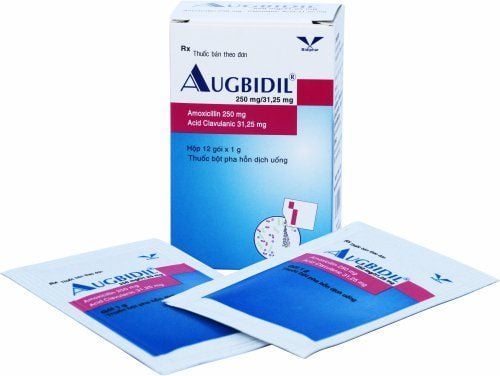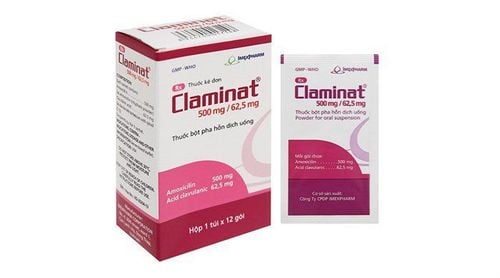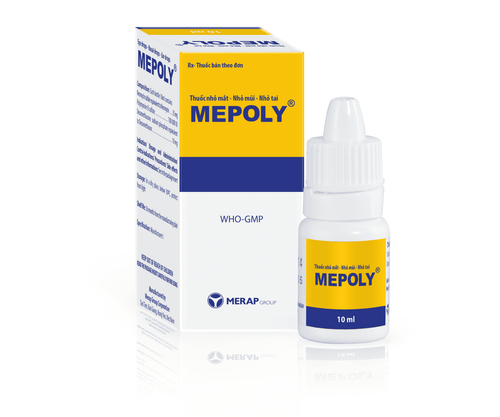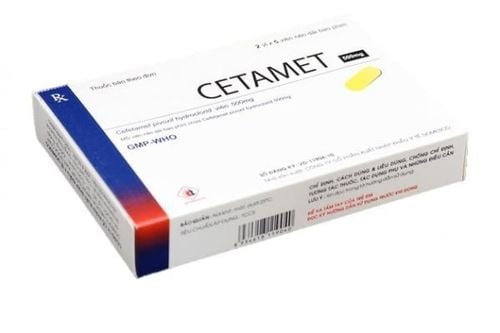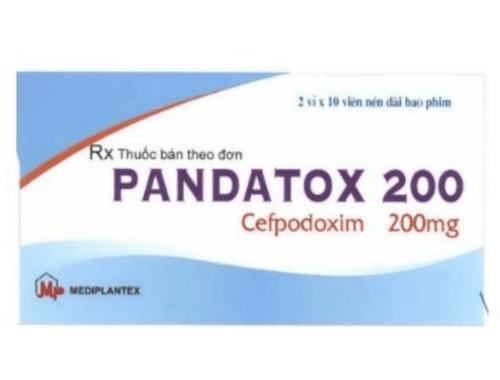This is an automatically translated article.
Selbako is a popular oral medication known for its anti-parasitic, antiviral, bacterial and fungal properties. To use Selbako safely and effectively, you should consult a pharmacist or specialist before using it.
1. What is Selbako?
Selbako is a drug known for its anti-parasitic, anti-infective, antiviral, and antifungal properties. The drug is made in the form of 100mg capsules- Cefpodoxime. Selbako is packed in blisters, each blister contains 10 tablets, each box contains 2 blisters.Selbako has the main ingredient is Cefpodoxime proxetil. This substance plays a key role in participating in the therapeutic mechanisms of Selbako drug.
Information about Cefpodoxime proxetil
Cefpodoxime is a 3rd generation Cephalosporin antibiotic, highly stable against attack by beta-lactamases (produced by gram-negative and gram-positive bacteria).
After administration, Cefpodoxime proxetil is rapidly absorbed and hydrolysed to Cefpodoxime and enters the bloodstream. Cefpodoxime is transported in the blood to organs in the body through its ability to bind to plasma proteins. The amount of Cefpodoxime bound to the protein is about 40%.
After reaching the damaged tissue, Cefpodoxime performs its antibacterial function by inhibiting bacterial cell wall synthesis by acylation of membrane-bound transpeptidase enzymes. This oxidation helps to prevent cross-linking of peptidoglycan chains essential for bacterial cell wall strength and durability.
Cefpodoxime proxetil is active against a wide range of bacteria, including Gram-positive and Gram-negative bacteria. It is also very stable to beta-lactamases.
After performing the antibacterial function, the remaining amount of Cefpodoxime will be excreted unchanged by the kidneys and excreted in the urine. The plasma half-life of cefpodoxime is approximately 2.8 hours.
2. Indications of the drug Selbako
Selbako with the ingredient is Cefpodoxime proxetil, so the drug is indicated for the treatment of bacterial infections, including:
Upper respiratory tract infections such as: acute otitis media, sinusitis, tonsillitis, pharyngitis ,... Community-acquired acute pneumonia. Early stage gonococcal disease has no complications. Uncomplicated early urinary tract infections. Skin infections.
3. How to take Selbako
For each age, gender, physical condition and medical condition, the dose will be different. Therefore, to get the most effective treatment, you should consult your doctor before taking Selbako.
The following are the manufacturer's recommended dosages for adults and children for each condition:
Dosage for adults:
Upper respiratory tract infections: 100mg Selbako every 12 hours and maintain the dose for 10 days. Community-acquired acute pneumonia: 200mg Selbako every 12 hours and maintenance dose for 14 days. Uncomplicated early gonococcal disease: A single dose of 200 mg. Uncomplicated early urinary tract infections: 100mg every 12 hours and maintenance dose for 7 days. Infections of the skin and skin structures: 400mg every 12 hours and maintained for 7-14 days. Dosage for children:
Acute otitis media: The recommended dose is 10mg/kg/day (maximum 400mg/day in 2 divided doses), maintained for 10 days. Pharyngitis and tonsillitis: The recommended dose is 10mg/kg/day (maximum 200mg/day in 2 divided doses), maintained for 10 days. Cefpodoxime-containing drugs such as Selbako should be administered with food. In patients with renal impairment with creatinine clearance less than 30 ml/min, the dosing interval should be increased to 24 hours. In addition, for patients with cirrhosis, no dose adjustment is required.
4. Contraindications to taking Selbako
Selbako should not be used in patients with a history of sensitivity to cefpodoxime proxetil.
5. Selbako Drug Interactions
When Cefpodoxime proxetil is co-administered with antacids or H2 inhibitors, plasma concentrations are reduced by approximately 30% compared to when not co-administered. Therefore, Selbako should be avoided with antacids or H2 inhibitors. If Selbako is used concurrently with a compound known to cause nephrotoxicity, renal function should be closely monitored for early detection of renal complications and prompt management. Cefpodoxime plasma concentrations are increased when cefpodoxime is used in combination with probenecid. Cefpodoxime proxetil alters test values, in particular Cephalosporins make the direct Coombs test positive. Therefore, the patient's drug history should be taken when the coombs test results are inconsistent with the clinical diagnosis. If the patient is already taking Selbako, it is very easy to give a false positive result.
6. Side effects of Selbako
Side effects of Selbako are usually mild and transient, including:
Diarrhea. nausea, vomiting. Abdominal pain, colitis. Headache. Rarely, hypersensitivity reactions, rash, pruritus, dizziness, disturbances in platelet counts, and decreased or increased basophils have been reported with Selbako.
Above is useful information about Selbako drug. Note, Selbako is a prescription drug, patients need to use the drug as prescribed by the doctor, absolutely do not self-treat at home. Selbako medicine maintains its best effect when stored below 25 degrees Celsius, protected from light and moisture.




